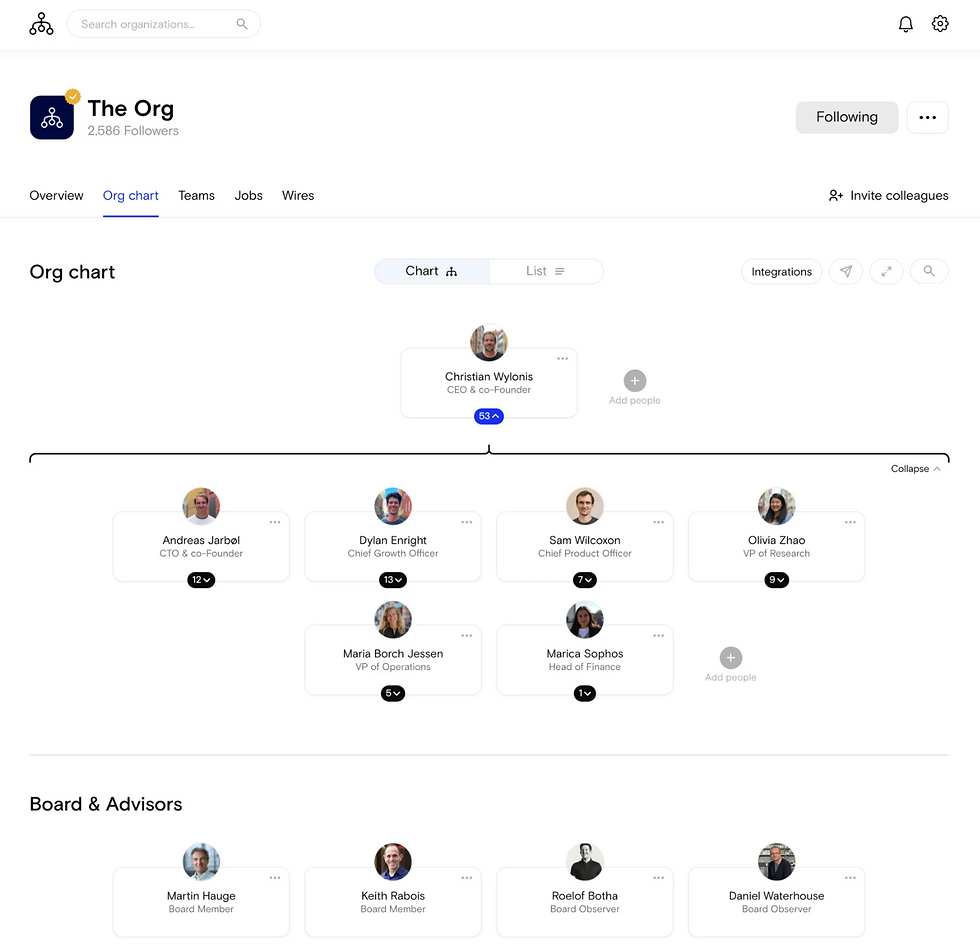Organisation Charts: The Perfect Introduction to a Job Interview?
- Joe Martin

- Jun 23, 2022
- 3 min read
The Org believe that every business should be using their organisation chart to set the right tone with prospective talent, even before the first interview.

“We believe a company’s greatest asset is its people,” write The Org on its website. Businesses featured on The Org include Apple, Amazon and Google. “This includes the folks that are never highlighted on the company website, never lauded in the press, and never showcased to the outside world on professional networking sites. We believe that if we can shine a light on these people, everyone will benefit.”
The idea is simple, but may have plenty of weight behind it. The Org is a web portal upon which businesses can display the ‘family tree’ of their business, from top to bottom: CEOs, board members, managers, technicians, interns… everyone beneath the umbrella, as well as ‘Now Hiring!’ spaces next to job titles that the company is looking to fill in the near future.
What is the Purpose of Organisational Charts?
It’s an idea that has been partially established within LinkedIn Premium, but The Org emphasises the aspect of public transparency; they believe that this information should be freely available to all, particularly those who are looking to join the company in the future.
For prospective talent, The Org states that their platform offers peace of mind to those worried about where they will fit in, who their nearest team members will be, who will be managing them and who will be performing the interview. Bloomberg recently released a report which suggests that, in 2022, more new recruits are leaving soon after arriving than ever – often within two months, sometimes within two weeks – and much of this can be attributed to the role not meeting what was advertised.

A public organisation chart offers a small step in gaining transparency, clearly displaying where a new employee will fit within the chain while assuaging potential doubts about how well-staffed the company is in key areas that will affect the role and how the workload is shared.
Meet the Family: Introducing New Employees to the Business
Attentive talent could also use the employee details to strike up conversation within the interview itself. Each employee can write a little introduction about themselves beneath a profile picture; for some, this may be a LinkedIn-style biography of some of the employees greatest achievements, or it may be something more personal – hobbies, sports teams, family and pets.
The result is that the job prospect gets to know their team before they even have the chance to meet them. In a competitive market, offering the stories of the people around you may offer the best chance to stand out against rival employers; the job prospect is more likely to remember idiosyncratic details and perhaps connect with your company on an emotional level if they see similarities between themselves and their potential co-workers.

But The Org see themselves as benefiting all within the business, not just prospective talent. For employees, there is a sense of recognition if the company present this organisation chart within their employer branding – no one is left out, everyone has a role to play within the company.
An organisation chart is something to display proudly: this is where we are, this is how we have grown. With the ‘Now Hiring!’ banners on The Org, there is also a sense of ‘this is where we want to be’; it’s an offer to the prospective talent to complete the organisational puzzle.
Comments